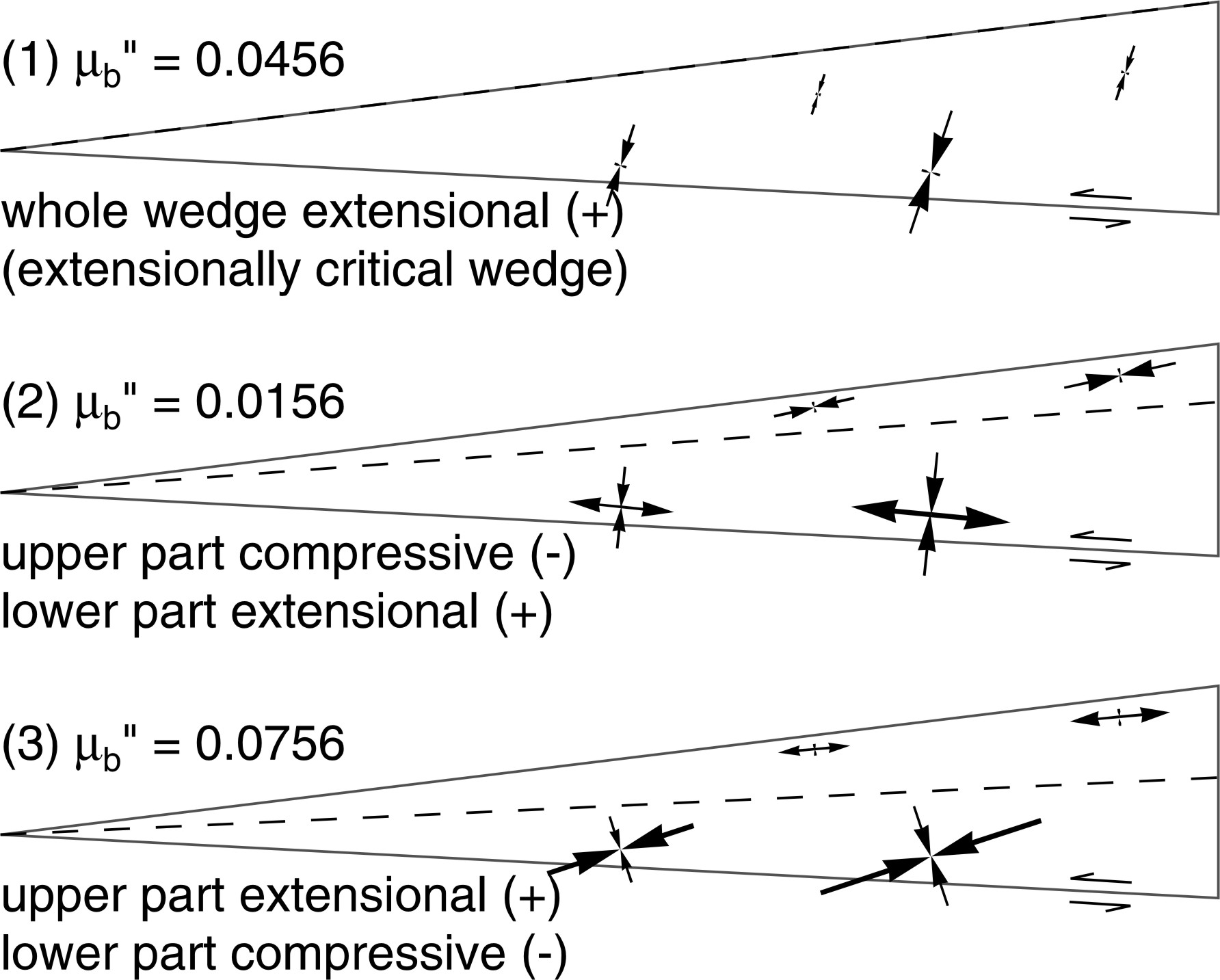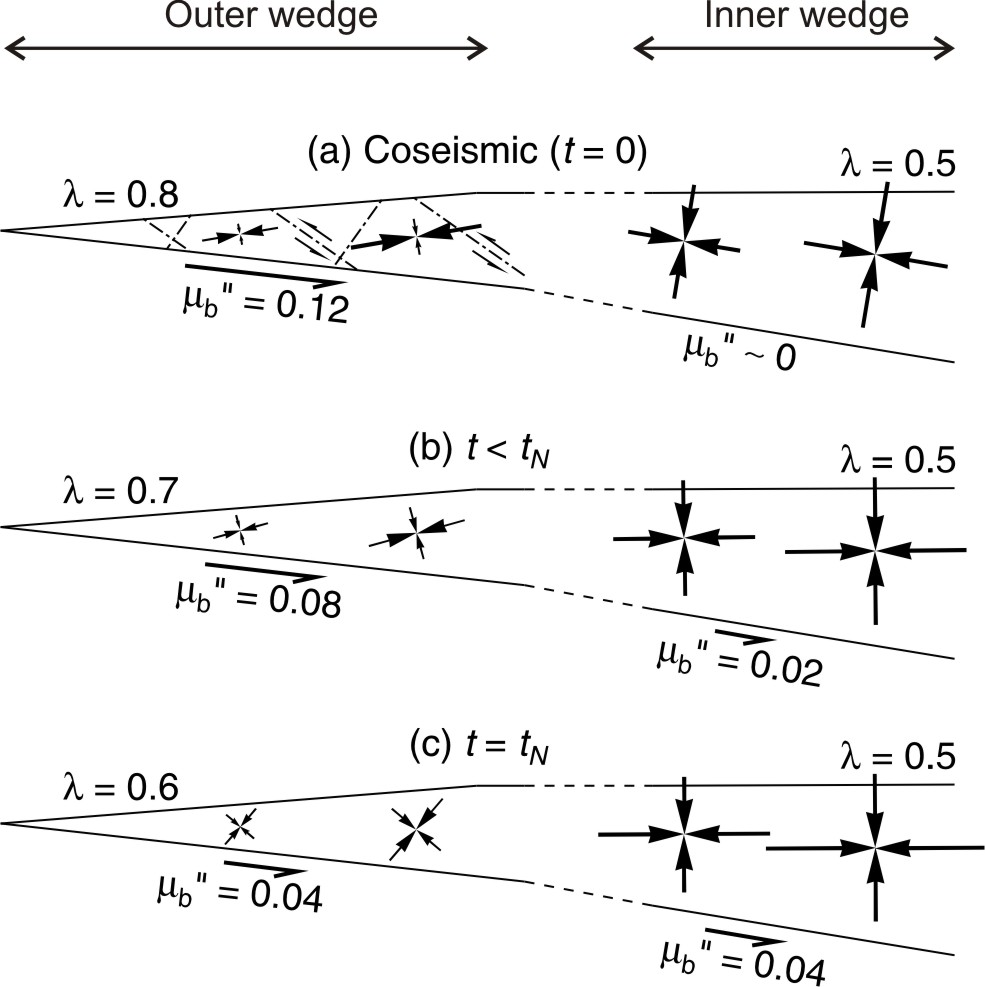

In this work, we derived an Airy stress function analytical solution for an elastic-perfectly-plastic, submarine or subareal, infinite or finite, wedge with a frictional basal fault.

Based on the analytical solution, we expanded the classical critically-tapered Coulomb wedge theory. The critical taper theory describes the stress state of a taper on the verge of either extensional or compressive failure. Our solution describes the stress state of a taper/wedge not only under critical failure but also at stable stages.

We further developed the Dynamic Coulomb Wedge theory: The actively deforming, most seaward part of an accretionary prism (outer wedge) overlies the updip velocity-strengthening part of the subduction fault, while the less deformed inland portion (inner wedge) overlies the velocity-weakening part of the fault (the seismogenic zone). The outer wedge is pushed into a compressively critical state during earthquakes and returns to stable states after the earthquake. The inner wedge undergoes mostly elastic deformation during and after the earthquake.

The new theory well explains the morphology and deformation patterns of an accretionary prism.

Published papers of this work include:
Copyright © Geodynamics Research Center,USTC/DSEL. All Rights Reserved.